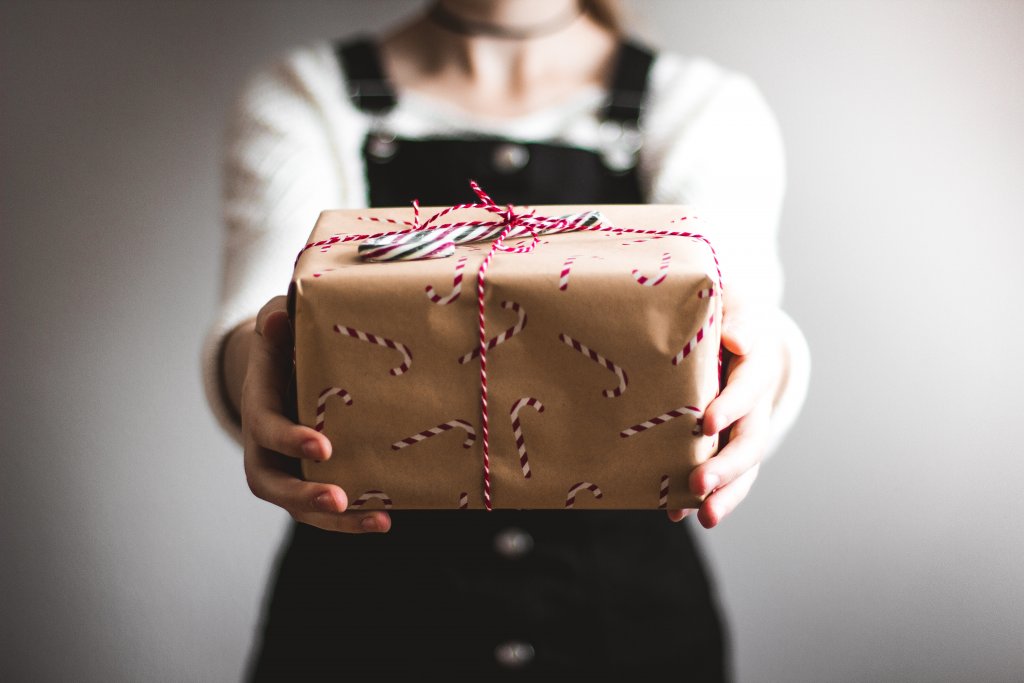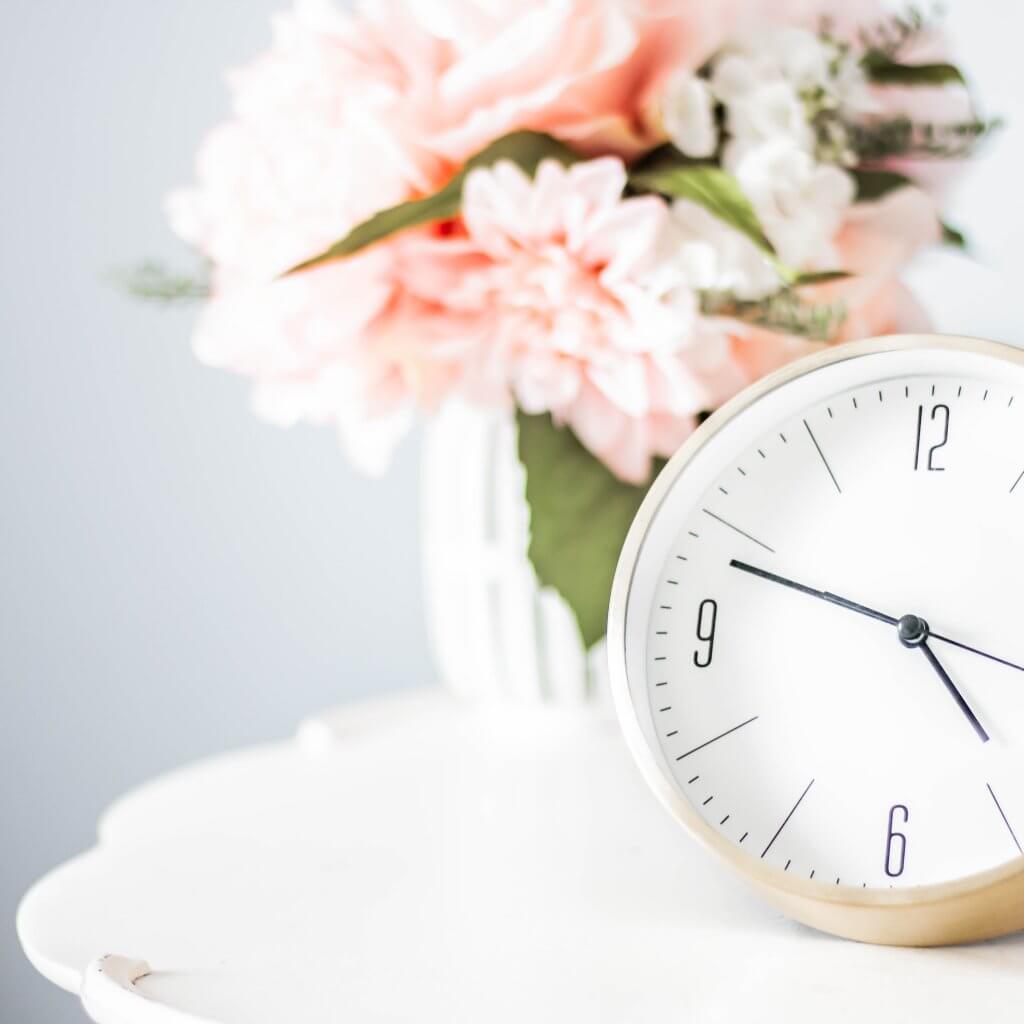For many people, the biggest challenge with decluttering is getting started and working through the process. Others finish decluttering their home only to find the clutter returned. Let’s learn how to stop the cycle of clutter and maintain your decluttered home.

How to Stop the Cycle of Clutter
First, we have to get realistic. Decluttering, for most people, is not a one and done process. It requires ongoing maintenance and a habit of decluttering.
However, you shouldn’t end up back where you started either. For most homes, the ideal is to do a one big decluttering process and then have ongoing light maintenance.
To stop the cycle of clutter in your home, follow these seven steps.
1. Change your shopping habits
When I decluttered my home I had quite a few realizations. One was recognizing how grateful I was for what I had, even though I had too much at the time.
Another realization was how I’d wasted quite a bit of money. I came across things I thought I needed at the time. At a minimum, I’d convinced myself I really wanted the item and that I’d make use of it.
While that was true for some things, there were also a whole lot of things I bought where I didn’t. They didn’t get loved or used and quickly became clutter.
I’d settled for things I thought were good enough and made impulse purchases. Amazon really makes it easy to order things without fully thinking through them.
There is no standing in line or waiting. With just a couple quick clicks it’s flying out of the warehouse on its way to your home. You know it’s a problem when you have boxes showing up but no earthly idea what it was you’d ordered.
While I am extremely frugal and never went on big shopping sprees, I still wasted a lot of money and space in my home with clutter. In order to stop the cycle of clutter in my home, I needed to look at how I shopped.
That meant taking more time to make decisions and becoming even more selective with what I bought. I started shopping more intentionally in an effort to maintain my decluttered space.
Not only did it save me money, but it helped me to be much more thoughtful about what I was purchasing and why. I more carefully evaluate whether or not it’s necessary before buying.

2. Have conversations with friends and family members
For most people, clutter comes not only from our shopping habits but also from other family members’ or friends’ shopping habits. If you have people in your life whose love language is gifts then you likely receive gifts from them regularly.
In that situation, be gentle. That person is trying to show you love through those things. You could consider trying to redirect them towards consumables or experiences or other clutter-free gift ideas so that it doesn’t become a burden.
If you have children and family members giving them gifts has become a problem, it’s time for some honest conversations. Let them know what your family’s goals are. Give alternate suggestions for what would benefit your kids most that fits with your values.
Aside from gift-giving, you may have people in your life who want to give you things they no longer want because they think you could use them. If you can, great.
But if it is causing a clutter issue for you take what you want and pass the rest along right away or simply let them know you don’t need or want anything.
3. Look at other clutter sources
I’ve found that free items can be a common clutter source. I use to be tempted to get items from my local buy nothing group even if it wasn’t something I truly needed.
Community events or conferences also can be sources of clutter with all the swag and free items you may be given. Resist the temptation to take them home. Just say no.
Paperwork is another big source of clutter. Go the extra mile to get yourself off mail and catalog lists. Consider switching to paperless billing statements. Create a simple system for handling mail and paper so that it doesn’t take over your counters or tables.

4. Reconsider traditions
Holidays and celebrations can also be sources of clutter. When you receive gifts you don’t like or want, you’re left with having to figure out what to do with it.
Consider doing gift exchanges to lower the number of gifts purchased and received during the holidays.
Often times it’s the kids who are inundated with birthday or holiday gifts. Consider alternate options such as requesting books for gifts, experience-based gifts, or other out of the box ideas.
Keep the toys to ones that require creativity and imagination. Let family members know what your preferences are. In most cases, your relative’s goal is to bring joy to your child.
Kids tend to be excited for a new toy briefly, but it often dies out quick and just becomes another thing. Experiences are a great option for kids. The memories will last a lifetime.
Conversations can go a long way to creating a mutual understanding. If after being clear about your wants and needs you still receive things outside of that, feel free to let it go. Don’t hold onto clutter out of guilt.
Stop the cycle of clutter by changing the way you celebrate. Holidays and birthdays don’t have to mean you’re left with a handful of things you didn’t want.
5. Examine daily habits
One of the reasons for clutter is having too much stuff. Another reason is not taking care of the things you own.
Clutter gets left out for a variety of reasons from reminding yourself to take care of it later to it doesn’t have a home to laziness. In order to stop the cycle of clutter change your daily habits.
Try these rules or a modification of them in your home.
One in one out
When something new comes into your home, get rid of the thing it replaced. If you buy a new article of clothing, pass along something you are not wearing.
It can be tempting to want to keep back ups of things, but in most cases it isn’t necessary. You are replacing the item for a reason so don’t hang onto the current thing in case it breaks.

One minute rule
If it takes less than a minute to put it away, go ahead and do it now. So often clutter is a result of procrastination. We don’t feel like putting something away now so it sits there and sits there collecting dust and causing visual clutter.
Get in the habit of putting things away quickly. Your countertops will thank you.
Daily clean up
Near the end of the day take a few minutes to look around for anything that needs to be put away. Get the whole family in on the action. Set a timer, put on music and make it fun.
Keep a container for donations handy so that as you come across items you no longer want, you can put them there immediately.
6. Reassess seasonally
After you’ve gone through the process of decluttering your entire home, I recommend seasonal decluttering, to stop the cycle of clutter.
This helps ensure you’re keeping the appropriate amount of belongings for you and your home. Having an ongoing awareness and decluttering habit helps you to stop the cycle of clutter.
Before the holidays is a great time to declutter. Spring cleaning tends to be good motivation too as well as back to school. As the seasons change, check in to make sure you don’t have clutter accumulating again.
7. Continual process
It’s important to understand that decluttering is a continual process. In order to stop the cycle of clutter, it will take discipline in what you allow into your home as well as creating a habit of decluttering.
Constantly reevaluate the amount of stuff in your home. Many people find that they don’t declutter as much as they wish they had the first time around. They go back to certain categories or areas to revisit what they have.
Decluttering is a continual refining process as you assess what you own. There is no magic amount to get to. It’s whatever is manageable and feels right for your home.
It takes a lot of effort to declutter your home. End cycle of clutter in your home using these tips.
Want to keep up to date with The Simplicity Habit? Sign up on the form below and you’ll get weekly tips on simplifying and decluttering your home and your life. You’ll also get the Your Home Decluttered Jumpstart which includes 100 easy items to declutter and 12 high impact areas to declutter in 10 minutes.



This was very helpful thank you
I find clutter is a result of many influences. I sometimes keep things (like a luggage set) for a trip my adult daughter might take. Sentimental items from my grandparents (which are cool and antique; and need dusting), the “I can make something really cool from this!”, the “There’s nothing wrong with this.” clutter.
Worse than that, my husband appears to hoard things I know he won’t ever use. I have a teak table he refinished 15 years ago in the basement (not set up) that will NEVER get used.
Facing facts, and being honest with yourself goes a long way.
1 in 1 out is a gamechanger, as is deleting the Amazon shopping app on my phone!